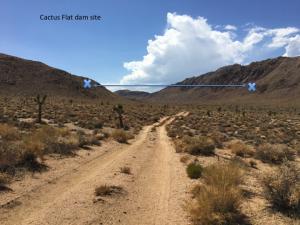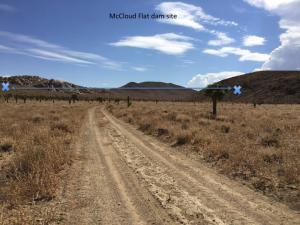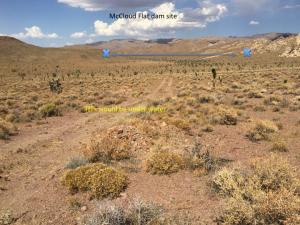In May 2019 Premium Energy submitted a preliminary application to the Federal Energy Regulatory Commission to build a hydro pumped storage project in the North Haiwee Reservoir area (FERC project P-14991). In March 2020 the Federal Energy Regulatory Commission (FERC) approved a preliminary permit for Premium Energy to explore the feasibility of a hydro-pumped storage project. The preliminary permit does not allow land disturbances or unauthorized trespass. If Premium Energy wants to do drilling or soil samples, the company has to get permits to do so from the appropriate agencies.
Hydro-pumped storage projects generate electricity at night or when other renewable energy systems are unavailable. Water is pumped up from a lower reservoir when electricity is cheaper and available and stored in an upper reservoir. When electricity is needed, water is released from the upper reservoir, flows through tunnels down to the lower reservoir to generate electricity.
The lower reservoir for the Haiwee pumped storage project would add a new reservoir at the north end of the North Haiwee Reservoir. Two locations are being proposed for the upper reservoir: Little Cactus Flat or McCloud Flat. Both are in the Coso Range and would be in an area of critical environmental concern (ACEC) for the Mojave Ground Squirrel, a Joshua tree forest, and a cultural-rich area.
In 2011 another hydro-pumped storage project was proposed at Haiwee. The lower reservoir proposed was the Lower Haiwee Reservoir and the upper reservoir proposed was very close to Cactus Flat. This project died for many reasons: 1) LADWP didn't want their reservoir to be used, 2) there wasn't a market for the electricity at the time, and 3) the cost of upgrading the transmission lines made the project infeasible.
FERC also recently issued Premium Energy a preliminary permits for a Walker Lake, Pyramid Lake, and Utah pumped storage project. On 10/1/20 they submitted a pre-application document and a notice of intent to file an application for a license for their Utah project. That project probably has the best chance of moving forward. It will be awhile before we hear anything further on the Haiwee Pumped Storage project. Premium Energy is required to report to FERC yearly. We won't know how the project is progressing until that report is submitted to FERC.
Cactus Flat proposed dam site and what would be under water.


McCloud Flat proposed dam site and what would be under water.


Before Premium Energy settled on Haiwee as the site, they proposed several other locations in the upper Owens Valley that were in wilderness or protected areas: Wheeler Ridge in the John Muir Wilderness, Silver Canyon tunneling under the Volcanic Tablelands, Fish Slough, and the Owens River, and the Ancient Bristlecone Pine Forest. FERC does not accept applications for projects sited in locations that would not be allowed by law such as wilderness areas. The ROLG made sure the proponent and FERC were aware of these conflicts and the impacts to endangered species. Premium Energy initially proposed three sites for an upper reservoir in their Haiwee hydro-pumped storage proposal. One site would have placed a reservoir in the recommended South Sierra Wilderness Extension. FERC rejected this site.
For more information on this project: ferc.gov select "eLibrary", enter P-14991 in the "enter Docket number" field and change "Past 60 days" to "All" next to the "Filed Date" field under "Select Date Range".